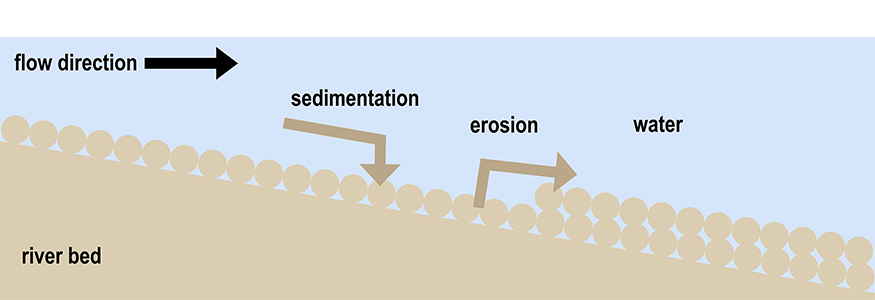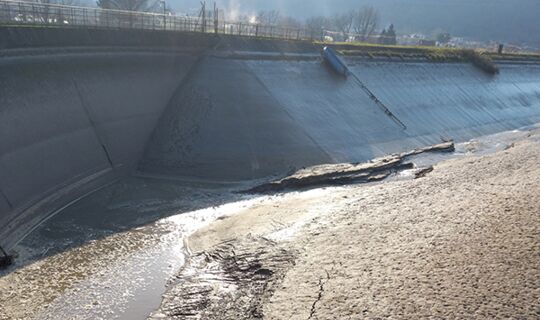Reservoir Siltation
“The last century was used to build reservoirs. This one will be used to solve sediment problems.”
World Bank
Siltation
Through anthropological intervention into natural waters, humans have greatly altered their hydromorphology. This has had a substantial impact on sediment budget and, thus, directly on the ecology of natural waters. When it comes to hydromorphological quality, the WRRL states that the continuity of sediment is an essential criterion for maintaining the proper condition of surface waters. For significantly altered or artificial bodies of water, it is imperative to ensure they are as ecologically passable as possible.
The issue of siltation must be solved for the long term in order to strike a balance between stakeholders and protected resources. Aside from anthropological and economic interests, this also means taking into consideration the environmental sustainability of animals and habitats. For sustainable water management, sediment should not be just continuously removed from the sediment budget but rather also added directly back to the system.
Loss of Retaining Capacity
Reservoirs and important and expensive pieces of infrastructure. They sustain us in times of drought and also protect us against flooding. With time, however, every reservoir experiences sediment deposition, gradually losing its functionality and transforming from a blessing into a burden.
Many reservoirs are also used as retention areas to protect hinterlands from inundation and flood damage. Climate change is bringing about an increase in the frequency and characteristics of extreme weather events, such as torrential rainfall. This is making the long-term functionality of retention areas a vital issue for the future.
In more southern areas, droughts are becoming more common and it is now imperative to protect water and to avoid wasting it. Conventional methods of reservoir desedimentation involve substantial water loss, negatively affecting the environment.


Erosion, Lack of Sediment, and Structural Safety
Lack of Sediment in Waters
A lack of sediment in downstream waters causes serious problems for humans, flora and fauna.
A lack of sediment in a body of water leads directly to substrate erosion. The composition of the bed changes and this can lead to the development of armored layers, which impacts the habitat of microorganisms that provide basic nourishment to local fish populations. With no food, the fish migrate elsewhere, which can worsen the quality of the body of water and bring the fishing of indigenous peoples to a grinding halt, eliminating a vital food source.

Bed and Bank Erosion
Bed and bank erosion cause rivers to widen, which makes it less common for the river to burst its banks. This reduces inundation of floodplains, and the plants and trees get less nutrients as a result. The habitat changes and biodiversity suffers. The alluvial forest no longer acts as a retention area and flood events increase in urban areas.
Erosion in river deltas results in an ever-growing loss of land in the delta. The coastline encroaches inland and displaces the habitat of humans and other animals. Rising sea levels can further amplify this phenomenon.
Hydraulic Structure Stability
Transverse structures alter the flow processes in waters and interfere with the natural sediment budget. Sedimentation occurs upstream of the structure and a lack of sediment results downstream. This can lead to deep scouring downstream, which can result in stability issues in hydraulic structures such as bridge piers or bank structures.
For reservoirs, sedimentation means a loss of function of economically viable capacity for hydroelectric power in the long term and even total siltation of the reservoir.
Reservoirs as retention areas

Many reservoirs are also used as retention areas to protect hinterlands from inundation and flood damage. Climate change is bringing about an increase in the frequency and characteristics of extreme weather events, such as torrential rainfall. This is making the long-term functionality of retention areas a vital issue for the future. In more southern areas, droughts are becoming more common and it is now imperative to protect water and to avoid wasting it. Conventional methods of reservoir desedimentation involve substantial water loss, negatively affecting the environment.

